
We were feeling quite pleased with ourselves after finally finding the stone circle. We still had a little time to kill before the meeting at lunchtime when we would hook up with our fellow director and one of our Companions, so we headed to a favourite spot. We wouldn’t have time to climb to the stone circle on the ridge, or the rather special and definitely pointy stone that marks its position, but it was a good spot to while away a little time and at least attempt to clean some of the mud from my feet.

I suppose I should explain about the UPS… the Ubiquitous Pointy Stone theory. It is a contentious issue. Having visited more ancient sites than we’ve had hot dinners the past few years, it was borne upon me, at a visit to this site, that many of them are marked by pointy stones. My companion accepts this part without argument. Walking the long way up to this stone circle, I had noted that…provided you stay on the right path… the way appeared to be marked by pointy stones. If, however, you deviate from that path, you lose the triangular form from view. Could this be a deliberate trail? A mode of navigation…like a prehistoric GPS? My companion usually starts shaking his head at about this point. He may even sigh a little…

My contention is that if the builders of the stone circles knew enough to incorporate stellar alignments, predict eclipses and set up precise astronomical relationships with the positioning of their monuments, a few pointy stones to get you from one site to the next would not be beyond them… In fact, thinking about it, maybe they used them as sighting stones for setting up the circles… hmmm…

My companion, when he reads this, will probably have his head in his hands… but you get the general idea. Considering his theories on wandering stones, my UPS theory seems perfectly feasible…. But I digress…

We loitered for a while near Cutthroat Bridge, a pleasant spot, in spite of its name and macabre history. Some four hundred years ago, Robert Ridge had found a man there with his throat cut. He died two days later, having been carried to nearby Bamford Hall. When the bridge was later built, the murder was remembered in its name. Even stranger, twenty years ago, the headless corpse of another murder victim was found there…

You would not imagine such horror in the green and gold of the little valley, but then, it is seldom that we can truly judge the past by the present. What lies long-forgotten beneath our feet? What human stories have unfolded over the millennia in what we think of as our own backyard? How many tragedies, how much laughter, how many stolen kisses have happened right where we now stand? The shades of our forefathers are never far away, even if we do not see them and I wonder sometimes if the echoes of their stories are the fount of inspiration from which we drink when we pick up a pen to write.















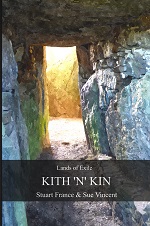


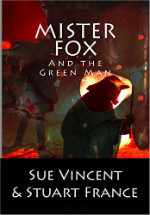
















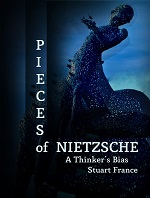
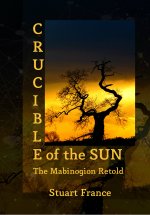


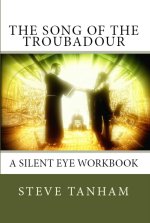


He probably won’t be too impressed by my SSRG system, then.
The Solitary, Straggly Rowan Guidance system never fails… there is usually a structure under, or, at the very least, a UPS nearby… 😉
LikeLiked by 2 people
Okay, so gang up on me why don’t you? First thing, I have no objection to the Pointy Stone Theory as outlined in this post. Makes perfect sense to me. My initial qualms were simply directed to how it would be received by the scientific fraternity, and that it maybe needed a tad more research before it could even be regarded as a theory. However, to move from that to, ahem, pointing out a lone pointy stone and claiming that it therefore MUST (not even a ‘may’ you notice) be significant, I do struggle with… this is the Ubiquitous Pointy Stone Theory proper.
Second thing, I am hardly likely to object to the Solitary, Straggly Rowan Guidance System, being of the Rowan Clan myself, indeed these days and most of the time I could well be described as A Solitary, Straggly Rowan myself… (ner… ner… ner-ner-ner… with twiddly pointed brass knobs on…) 🙂
LikeLiked by 2 people
I fear the scrientific fraternity would be equally resistent to the Wandering Stone theory… though as one respected Bear seems to have observed an equally strange phenomenon, perhaps we are not entirely nuts… 😉
LikeLiked by 1 person
Undoubtedly, which is why ‘we’ were so circumspect about publishing it, however, it is a mainstay of the folk tradition so…
LikeLike
Ah… claiming the legitimacy of antiquity now… A little below the belt, I fear…. 😉
LikeLiked by 1 person
Antiquity must needs have originally come from below the belt…
LikeLike
I would mention sophistry, but the modern usage is too far from its origins…
LikeLike
You would mention sophistry to a ‘Lover of Wisdom’… tutt tutt tutt…
LikeLike
Nah… not before breakfast, I wouldn’t…
LikeLiked by 1 person
lol And here was me thinking I was the only subscriber to that most excellent SSGS… 😉 xx
LikeLiked by 1 person
I’m sort of fond of it myself 😉 xx
LikeLiked by 1 person
Most excellent indeed…
LikeLiked by 2 people
Ah, now at a very particular spot, on the agenda for next April, we have a perfect example of an SSR to show you… 😉
LikeLiked by 1 person
😀 xx
LikeLiked by 1 person
🙂 xx
LikeLike
Actually, your pointy stone theory makes sense to me. Maybe the pointy stones were originally actual pointers that travelers knew to look for. Because they were mathematically advanced, so why not?
LikeLike
My contention exactly, Marilyn 🙂
LikeLike
It’s a Conspiracy…
LikeLike
Yet another theory 😉
LikeLiked by 1 person
Contrary to popular opinion a conspiracy doesn’t have to be a theory…
LikeLike
But it does require collusion… and we have all arrived quite seperately at our conclusions 😉
LikeLiked by 1 person
Collusion, yes…I was alluding to the media’s habit of designating all conspiracies as merely theoretical…
LikeLike
A neat ploy to allow all such ideas to be dismissed into the arena of the lunatic fringe…
LikeLiked by 1 person
Yup… and thus perpetuate the conspiracy where there is one…
LikeLike
There is little hope for us…
LikeLiked by 1 person
You never know…
LikeLike
I’m a perpetual optimist…
LikeLiked by 1 person
Me too…
LikeLike
I’d noticed 😉
LikeLiked by 1 person
Reblogged this on Anita Dawes & Jaye Marie.
LikeLike
I like the theory and the reflections about places too.
LikeLike
Thanks, Olga. You have to wonder sometimes…
LikeLike
I think your pointy stone theory makes absolute sense. And if they don’t point the way towards stone circles, keeping folk on the right path, what are they for? Random pointy stones?
LikeLike
To be fair, they could be random… and we’d need a lot more in situ to really test the idea… but as a theory, I’m quite attached to it 😉
LikeLike
i agree with the markers theory but am intrigued by the wandering stones, perhaps he might enlighten?
LikeLike
He may be happy to oblige, Adele, when he gets chance. 🙂
LikeLike
I totally agree with your UPS system, having observed a similar thing over here too. Ancient sites often have a smallish standing stone with a pointy top nearby. They are almost wedge shaped but a bit rounded too. I have noticed the occasional pointy stone all by itself and wondered if they indicated a path or route or boundary of some kind. Now I know that I’m not mad… or at least that we all are! 😁
LikeLike
Nothing wrong with being a lunatic in good company 😀 I wonder if it works the same… follow the path that keeps the triangular shape clearly in view…?
LikeLiked by 1 person
Gonna try it. I’ll let you know
LikeLike
Thanks… it would be good to know 🙂
LikeLiked by 1 person
I am totally on board with your pointy stone theory. Your data set might be small at the moment. It can be expanded. Pointy stones! Reveal yourselves!
LikeLike
The difficulty is distinguising the significant pointy sones from the random ones 🙂
LikeLike
Your UPS system sounds very reasonable to me. Why not? I would love love love to go back a few thousand years ago and see how the landscape was managed by our ancestors 🙂
LikeLike
I think we would probably get quite a surprise at just how well they managed it 🙂
LikeLiked by 1 person
Yes, I think we’d find a far more sophisticated civilisation than is currently imagined. Did you see, they’ve carbon dated a circular ring structure in a cave in France to 176,500 years ago? It is two concentric rings made of deliberately broken stalactites and stalagmites, evidence of fire and feasting, definitely built by human hands. So it seems stone circles are an even older construct than previously considered…
LikeLike
Yes, I saw that… which alters our perspective, especially of Neanderthals, quite considerably.
LikeLiked by 1 person
Definitely 😀
LikeLike
🙂
LikeLike